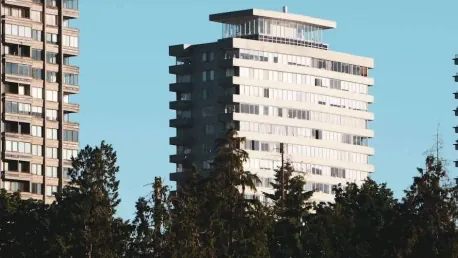The future redevelopment of Vancouver’s downtown Waterfront Station precinct and the Gastown railyard presents a transformative opportunity for the city. Ken Sim, the Mayor of Vancouver, along with architect Joe Hruda, founder of CIVITAS Urban Design and Planning, express high hopes about the project’s potential to significantly influence the city’s future landscape. The redevelopment plan is set to turn an underutilized railyard into a lively, green community and an international transportation hub, fostering economic growth and enhancing the quality of urban life.
Vision for the Waterfront
Comprehensive Reimagining
The transformation aims at revitalizing a currently underdeveloped area, comparable to the Coal Harbour waterfront transformation from two decades ago, though it promises a broader range of functional uses, building forms, and public spaces. Hruda’s vision for the project involves a comprehensive reimagining of the area, including an extensive expansion and enhancement of the Waterfront Station transit hub. The proposed development features a new railway expansion beneath a grand atrium, flanked by mid-rise buildings and high-rise towers designated for office and residential use.
In addition, the redevelopment envisions a reconstructed and expanded SeaBus terminal under a striking triangular canopy. A significant pedestrian-only public plaza, potentially the largest in Vancouver, is also part of the plan. This plaza would be bordered by retail and restaurant frontages, culminating in a vibrant community space. Moreover, a new hotel is expected to frame this public area, boosting accessibility and tourism. Hruda’s blueprint represents not just an architectural overhaul but a social and economic rejuvenation of an area known for its potential yet lags in development.
Residential and Recreational Spaces
Central to the redevelopment is the introduction of shorter high-rise towers perched atop mid-rise base podiums, primarily for residential use. These towers, set with their northern frontages terraced to face Burrard Inlet, promise to bring new dimensions to living spaces within this rejuvenated precinct. Framing a new urban park, this central area seamlessly blends natural elements with urban living, serving both aesthetic and functional purposes. The development also plans for a naturalized shoreline along the waterfront frontage within this central area, complete with four ‘Island Parks,’ reminiscent of Habitat Island in False Creek.
To the east, the redevelopment plans include a smaller cluster of office buildings at the northern foot of Main Street, promising to add commercial vibrancy to the area. Crab Park is slated to undergo enhancements such as the addition of a lookout pier, a beach, a First Nations community center, and a landmark Indigenous welcoming figure. This integration of green spaces and community amenities aims to create an area where residential, recreational, and cultural elements coexist harmoniously, promoting an inclusive and dynamic urban environment.
Connectivity and Infrastructure
Seamless Integration with Gastown
A critical aspect of the redevelopment plan focuses on ensuring seamless connectivity between the historic Gastown district and the new waterfront precinct. This integration relies on preserving a trench for railway connections to Waterfront Station, facilitating smooth transit operations. The plan includes the construction of new north-south pedestrian and vehicle routes via extensions of Gastown’s streets, proposed as bridges over the railway trench. The intention is to enhance connectivity without compromising the area’s historical integrity and accessibility. The seamless blend of old and new, historical and modern, is central to achieving a cohesive urban experience.
Crucially, the plan proposes truncating Waterfront Road to allow for a large pedestrian plaza near the transit hub, redirecting the road to terminate within Gastown instead of connecting underground to West Cordova Street. This move aims to prioritize pedestrian mobility and create expansive, walkable spaces that enhance the urban fabric’s social and functional aspects. Emphasizing walkability aligns with global trends in urban development, where cities are increasingly prioritizing pedestrian-friendly infrastructure to improve quality of life and foster vibrant, engaged communities.
Stakeholder Coordination
The project faces significant challenges, one of the foremost being the need for meticulous coordination among a myriad of stakeholders, each with its own interests and priorities. The Vancouver Park Board, TransLink, Transport Canada, Vancouver Fraser Port Authority, BC Ministry of Transportation and Transit, Tourism BC, Pavco, Canadian Pacific Kansas City (CPKC), Canadian National, VIA Rail, GHD Developments, Cadillac Fairview, and local First Nations all have stakes in the redevelopment. Successfully aligning these diverse groups to achieve a shared vision requires careful negotiation and a balanced approach.
Mayor Ken Sim highlighted the complexity of attaining consensus among these varied stakeholders, emphasizing that no single entity will see all of its desires fulfilled. Previous planning efforts, particularly a study from the 2000s spurred by the Vancouver Whitecaps’ proposal to build a soccer stadium, offer a preliminary framework for understanding the transit hub and railyard area’s potential. This background work underscores the necessity of building on prior insights and integrating contemporary needs to navigate the redevelopment’s complexities effectively.
Economic and Environmental Considerations
Preserving Goods Movement
One primary concern for the port authority is maintaining the efficient movement of goods from the adjacent Centerm container terminal, underscoring the need for continued unhindered railway access. The redevelopment plans must ensure that the logistics and transport functions of this port facility remain operational and effective, crucial for supporting Vancouver’s role as a major commercial hub. The port’s functionality is essential not only to the local economy but also to Canada’s broader logistical network, necessitating a sophisticated integration of goods movement into the redeveloped space.
For Pavco and Tourism BC, the possibility of a future convention center expansion is vital to maintaining Vancouver’s competitiveness in attracting significant events. These expansions are increasingly crucial for tourism and the city’s economy, particularly given the recent expansions of similar facilities in nearby cities like Seattle and Calgary. Addressing the site’s constraints west of Canada Place is imperative to accommodate future developments and maintain Vancouver’s appeal as a premier destination for international conferences and events.
Market-Based Developments
The upcoming redevelopment of Vancouver’s downtown Waterfront Station area and the Gastown railyard is set to be a game-changer for the city. Mayor Ken Sim, in collaboration with Joe Hruda, an architect and founder of CIVITAS Urban Design and Planning, are optimistic about the project’s capacity to profoundly impact Vancouver’s future. Transforming a currently underutilized railyard, the plan envisions creating a vibrant, green community and a bustling international transportation hub.
This initiative aims not only to boost the local economy but also to enhance the quality of life for residents. By introducing more green spaces, improving public transportation connections, and incorporating sustainable design practices, the redevelopment will set a new standard for urban living. It promises to provide a mix of commercial, residential, and recreational spaces, making it a lively area where people can work, live, and play.
Moreover, the project is expected to become a magnet for tourists and investors alike, bringing greater visibility and economic opportunities to the city. By seamlessly blending historical elements with modern infrastructure, the plan respects Vancouver’s rich heritage while positioning it for a dynamic future. Overall, the redevelopment of the Waterfront Station precinct and Gastown railyard is poised to transform the urban landscape, creating a more connected, green, and thriving Vancouver.









